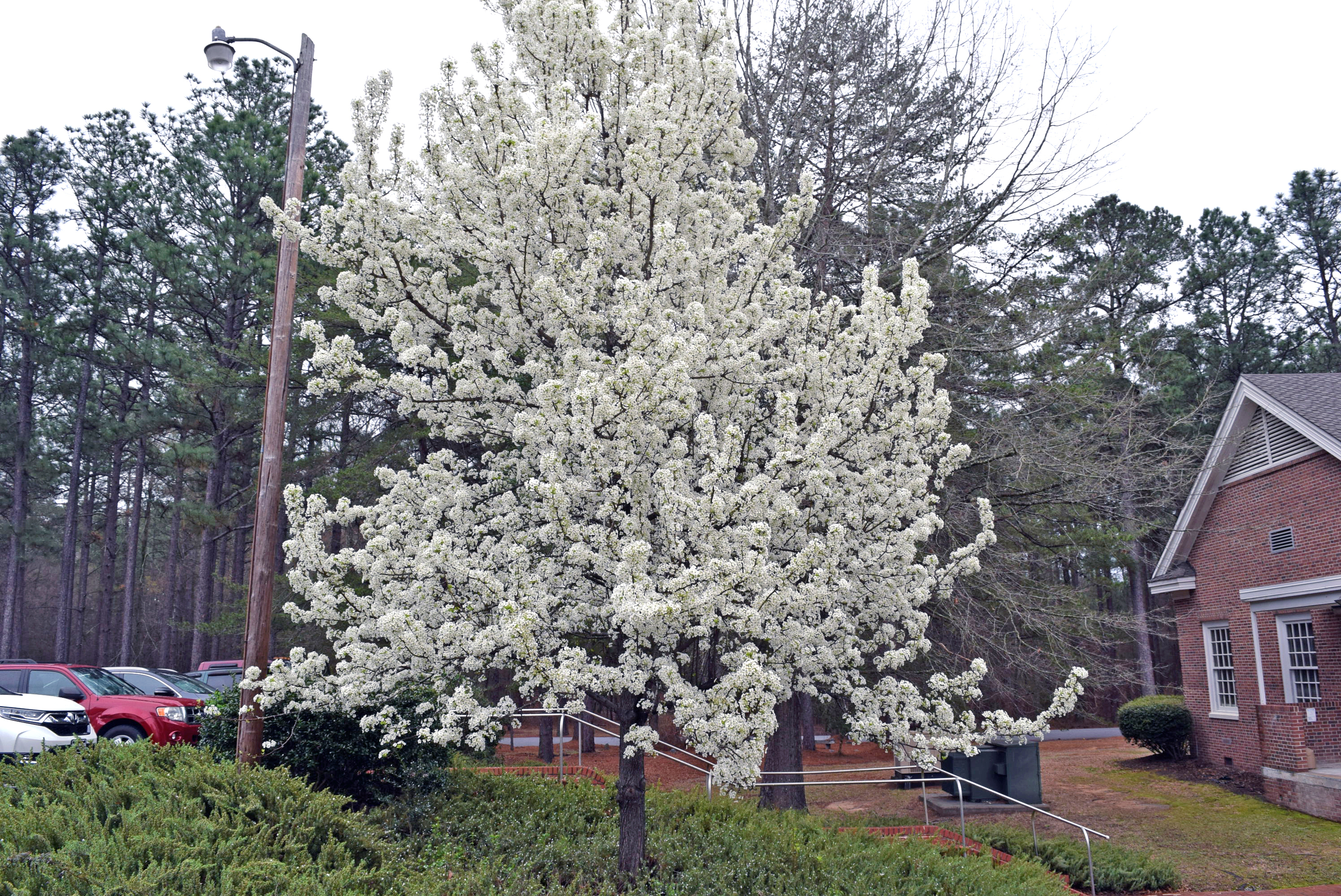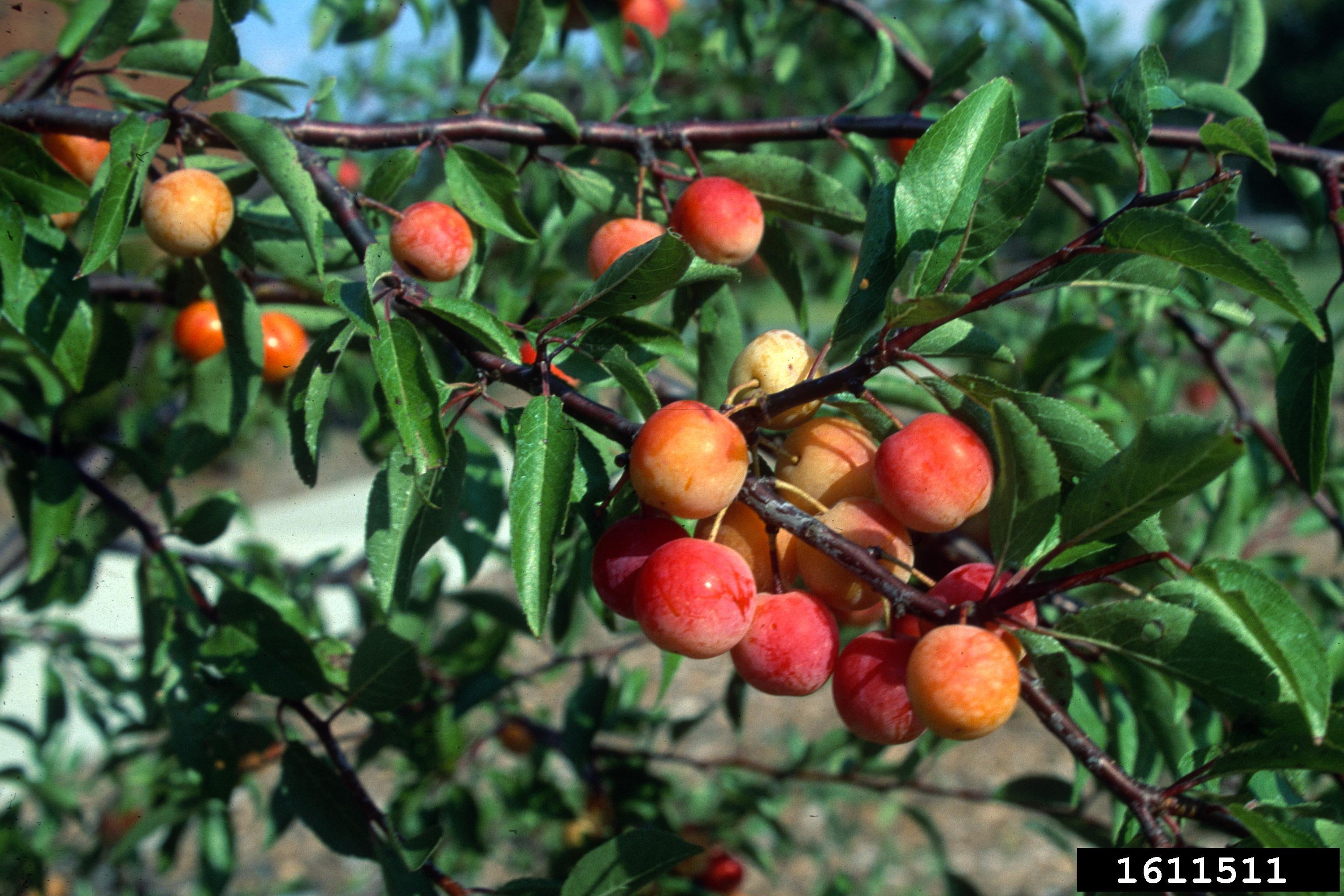About Flowering Pears
Callery pear, Pyrus calleryana, was brought to the United States in the early 1900s to help combat the fire blight epidemic in European pear fruit trees. A few decades later, one particular tree was noticed to have a uniform shape, profuse white flowers, no thorns, and bright red fall foliage. The Bradford pear, as it was named, was later planted throughout the Southeast and became a very popular ornamental tree. Bradford pear trees are self-incompatible, meaning two Bradford pear trees will not produce a viable fruit. But, as other P. calleryana cultivars became more popular and as more wild Callery pears began to grow on the landscape, all the flowering P. calleryana pear trees began to cross pollinate and produce abundant amounts of fruit that were spread by birds.
What is a Bradford pear?

- A flowering cultivar of Pyrus calleryana, a tree native to Asia
- Commonly planted, deciduous ornamental tree found throughout South Carolina
- Introduced from Asia for its resistance to fire blight
- Medium-sized tree with rounded form [can reach 60 feet in height (18 m)]
- Glossy, dark green, rounded leaves and poor branch structure
- Abundant, white spring flowers with offensive odor
- Small, rounded fruits consumed and spread by many birds
- Common cultivars not named Bradford include Cleveland Select, Select, Aristocrat, Cleveland Pride, Princessa, and many more

What is a callery pear?

- Extremely invasive, fast-growing tree
- Often forms dense stands
- Chokes out native trees and overtakes open areas and fields
- Has large thorns capable of drawing blood and puncturing tires
- Supports very little insect life, which means every callery pear tree represents a “food desert” for many songbirds
- Can produce viable fruit in as little as 3 years; fruit are spread by birds
- If the top of the tree dies, many sprouts emerge from the base
This is a chickasaw plum, not to be confused with a callery pear:

Image credit: John Ruter, University of Georgia, Bugwood.org
How it spreads
Birds consume the fruit after frost has softened it, subsequently spreading it, and new suckers can sprout from cut stumps or large roots that are close to the soil surface. It can be very abundant in old fields.
Managing Callery pear
Do not plant any P. calleryana cultivar. Instead, plant native alternatives, such as
- Tupelo or Blackgum (Nyssa sylvatica)
- Dogwood (Cornus florida)
- Serviceberry (Amelanchier arborea)
- Carolina silverbell (Halesia carolina)
- Star magnolia (Magnolia stellata).
Flowering pear trees should be cut and stumps immediately treated with herbicide to eliminate sprouting response. Landowners should not confuse Bradford or Callery pears with Chickasaw plum trees, which have very similar flowers that begin blooming around the same time as pear trees. Another difference is that Chickasaw plum produces red plums, limbs are more slender and it's form is more shrub-like verses a tree.
Contact information
If you would like more information on flowering pears, contact
- David Jenkins at the SC Forestry Commission at djenkins@scfc.gov or
- Clemson Invasive Species Program
- Clemson Extension Forestry & Natural Resources team
For information on how you can combat invasive plants in your community visit the South Carolina Exotic Pest Plant website at https://www.se-eppc.org/southcarolina/ or send an email to southcarolinaeppc@gmail.com .
View the Bradford pear fact sheet from Clemson HGIC.
Download the Bradford Pear PDF factsheet from the SC Forestry Commission.
